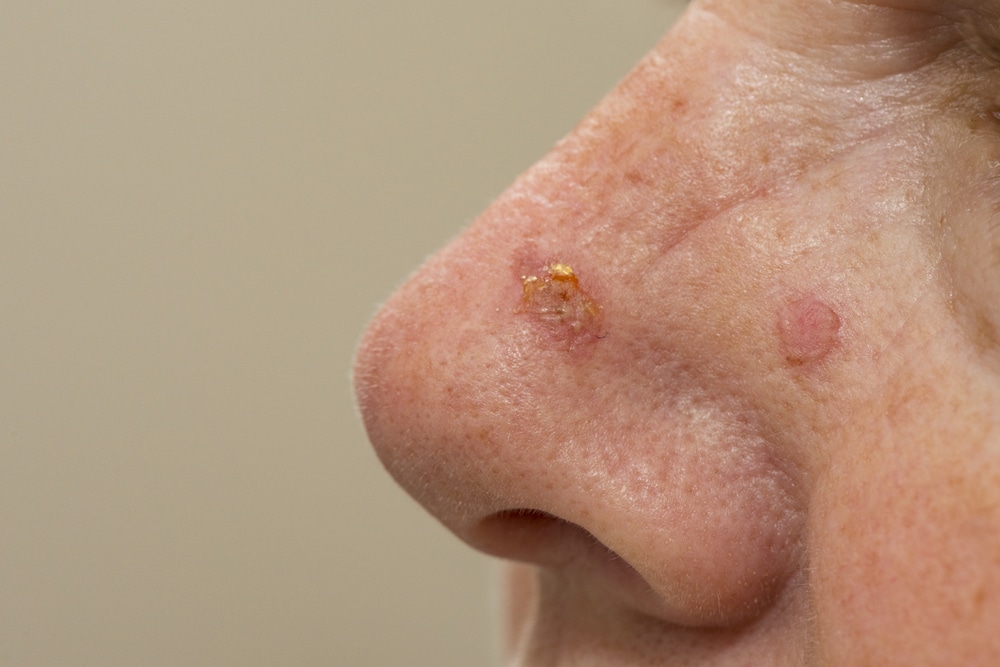Actinic keratosis is a skin lesion that can become cancer if left untreated. If you don’t know what to look for when it comes to actinic keratoses, it’s always best to consult a board-certified dermatologist and explore your treatment options. Here’s what to know about actinic keratoses and your treatment options with our team.
What are Actinic Keratoses?
Actinic keratoses are lesions that occur on the skin that are small, rough, and usually appear in areas that are often exposed to the sun (like the face, scalp, ears, hands, chest, forearms, and legs). They’re sometimes known as solar keratoses and can be prevented by sun protection and wearing sunscreen.
Actinic keratoses are important to know about since they can develop into squamous cell carcinoma. Typically, they are surface-level or superficial lesions. However, if they develop into skin cancer, the cells can spread to the deeper tissues and organs.
When Should I See a Dermatologist About Actinic Keratosis?
Your risk of squamous cell cancer development can be reduced with effective treatment. This means you should see a dermatologist to explore treatment options if you feel or see an actinic keratosis developing. You should especially see a dermatologist if you notice the following symptoms:
- Growth
- Bleeding
- Burning
- Sensitivity
- Itching
What Are My Treatment Options for Actinic Keratoses?
There are a variety of ways that actinic keratoses can be removed by a board-certified dermatologist. Our practice utilizes cryosurgery, 5-fluorouracil cream, imiquimod cream, diclofenac gel, Klysiri ointment, curettage, calcipotriene/5-FU cream, and chemical peels to treat actinic keratoses. One of the most exciting newer ways to treat actinic keratoses is BLU-U Photodynamic Therapy. This light-based treatment option uses visible Blue Light and a photosensitizing medication (called Levulan) to eliminate the impacted skin cells. During treatment, the medication is applied to the area and left to activate. Once you’re ready, the skin will be placed in front of the Blue Light illuminator which emits blue wavelengths of light for about fifteen minutes. For most patients, results are achieved within 7-10 days. Subsequently, it is still important to practice good sun protection habits and wear SPF 30+ daily to prevent skin damage.
Schedule an Appointment
At HMGS Dermatology, our board-certified dermatologists can help you explore your best treatment options for actinic keratoses as well as how to keep your skin healthy and cancer-free. To learn more and schedule an appointment, contact our locations by calling or filling out our online form.
